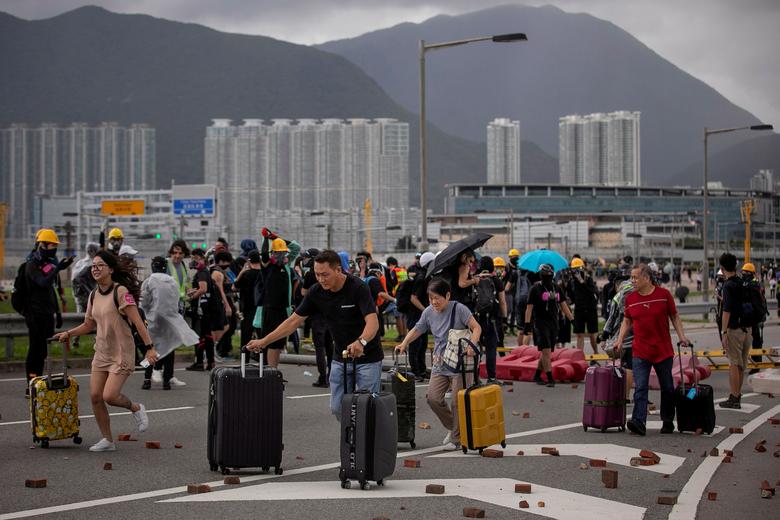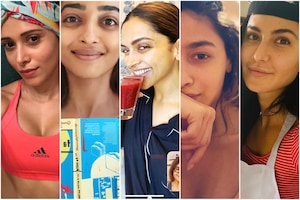"It was surreal,” says Anushree Fadnavis about her experience of covering the Hong Kong protests. Fadnavis is one of the three Reuters photographers from India who won the prestigious Pulitzer Prize last week for their coverage of the demonstrations that rocked the city last year. “The challenge was to tell people’s story as sensitively as possible,” she says.
Fadnavis, along with another Indian photographer Adnan Abidi, was among the team of Reuters’ photographers which received the recognition in Breaking News category for the coverage of massive pro-democracy, anti-government protests that unfolded over many months in Hong Kong last year. Dar Yasin, Mukhtar Khan and Channi Anand were other three Indian photographers to win Pulitzer Prize in Feature photography category this year.
Fadnavis captured her winning image when she and her team were following the anti-government protestors running from the police after they held a protest at the Hong Kong International Airport. The day seemed unending. “The protestors were trying to disrupt the flights. After being chased by the police, they decided to take an alternate route to reach a metro station to disrupt the movement of subway trains there. On way to the Tung Chung metro station, the protesters started blocking roads using bricks and barricades,” Fadnavis recalls.
It was at this moment that Fadnavis saw gloomy skies about to pour and people making their way through the blockades with their luggage to reach the airport.
“I saw people getting off from their cars, walking across and few of them also showed their support to the protestors and a few other who decided to walk towards the airport harmoniously with the protestors. The picture I took was to show the hardships faced by people amid protests,” Fadnavis says.
Passengers push their luggage past bricks and barriers after anti-government protesters blocked the roads leading to Hong Kong International Airport, in Hong Kong, China, September 1, 2019. REUTERS/Anushree Fadnavis
Fadnavis was inspired by Homai Vyarawalla, India’s first woman photographer. Vyarwalla started her career in the 1930s with Mumbai-based The Illustrated Weekly of India magazine. Her initial images were published under her husband’s name, but eventually, her photography received recognition. She has photographed several leaders like Mahatma Gandhi, Jawaharlal Nehru, Muhammad Ali Jinnah, Indira Gandhi and the Nehru-Gandhi family.
Other photographers who inspired Fadnavis are Arko Datta, Atul Loke, Ritesh Uttamchandani, David Alan Harvey and Fawzan Hussain. “It was only over a course of time I came across works of other women photographers. Poulomi Basu and her work was a huge inspiration. But the book Myself Mona Ahmed by Dayanita Singh really helped me shape my understanding of a story. Ketaki Sheth’s sensitive work on The Sidis (a small community of Indians of African descent) also was a huge inspiration,” she says.
Fadnavis believes that telling stories through a woman perspective shows us a different world. “For a long time, we have seen the world with a man’s perspective. But things are finally changing,” she says. “We need to tell the stories of our times and ourselves and the challenge here is to tell it as sensitively as possible,” the photographer says.
There have been times when Fadnavis has been irked by the fact that women photographers are very few in numbers, but she says, things are changing now.
It was her father who had a role in shaping her passion for clicking moments. “He would always be clicking pictures of me and my sister.” In fact, when she took up photography 10 years ago, she did not even have a camera of her own. “I was working as a software engineer and photography was something I took up as a hobby. I always wanted to do journalism but I did not know how to begin. Then, I met Arko Datta one day and I saw the passion with which he was talking about pictures and it moved me. I think that day I realised that I wanted to tell stories through pictures,” she adds.
Her sudden shift in career options did make her parents anxious initially, but eventually, they understood her passion for photography.
Getting into a profession that has been seen as a male-dominated field for long, despite women making their impact too, Fadnavis knew the challenges. “My guru would always tell me that I don't need to show machismo to prove myself in this field. You are a woman and you have your own advantages, he always reminded me,” she says.
Despite all the determination to do the best and excelling in her career, Fadnavis says that there have been instances on the field where she or her women colleagues were 'reminded' that they will have to give up on their work to take care of their families. “Sometimes such comments wear you down but I have just kept quiet and carried on with work. At Reuters I have had immense support from my peers and colleagues,” Fadnavis says.
She believes that the only difference between a male photographer and female photographer is in the way people see them. “We definitely need a change in the way we perceive women. We worship women Gods, but when it comes to treating women in our lives we fail to respect them and their wishes. A shift in this outlook only will help us create safer spaces for women to come out and work and express their feelings,” Fadnavis says.













